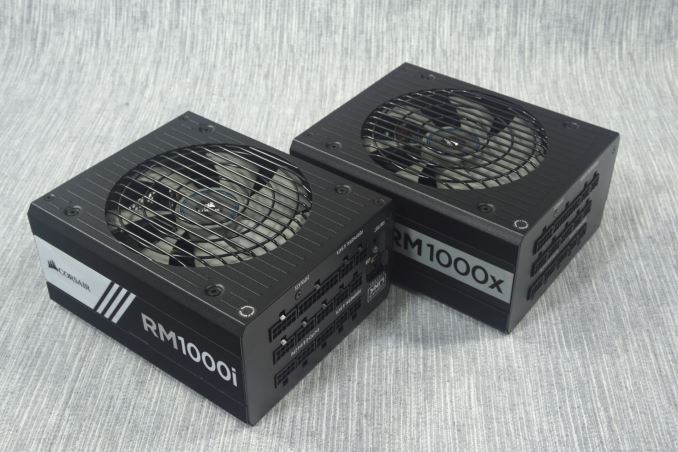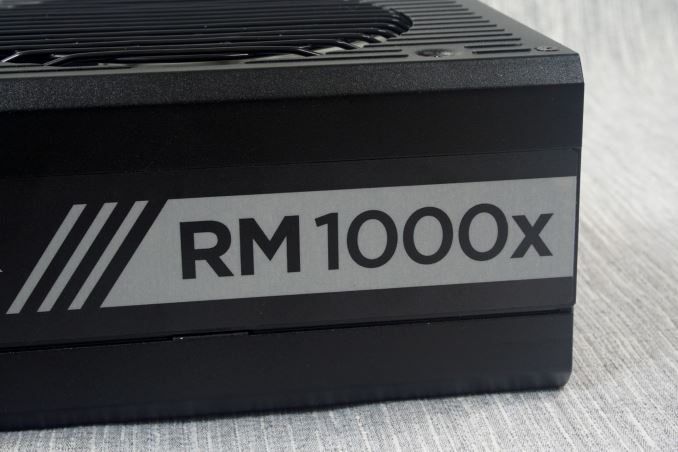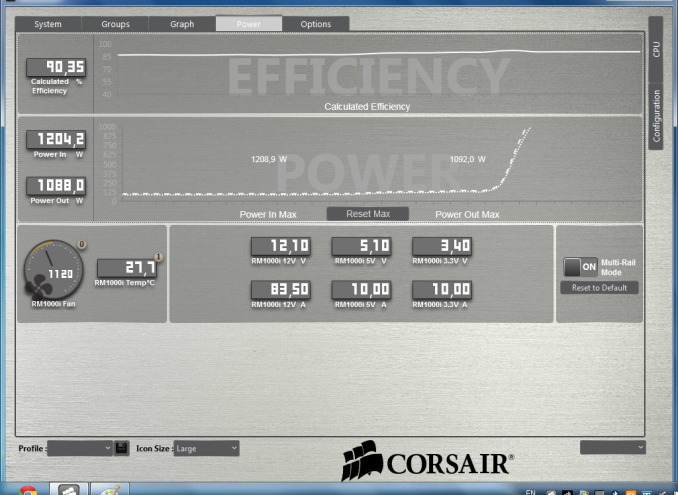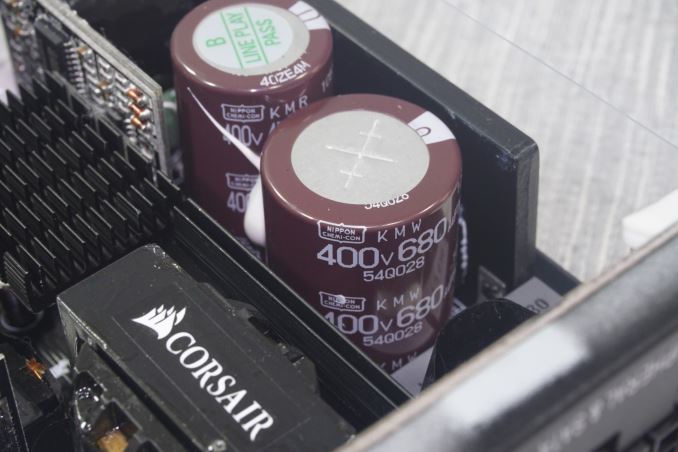The Corsair RM1000x and RM1000i 1000W Power Supply Review
by E. Fylladitakis on September 30, 2015 8:00 AM EST- Posted in
- Cases/Cooling/PSUs
- Corsair
- RM Series
- Corsair Link
Conclusion
With Corsair placing a lot of emphasis within their business operations on their PSUs, it is no surprise that they are constantly releasing new models and upgrading their old ones. The RM series is focused on providing high performance while maintaining the lowest possible noise levels. In our review of the original RM1000, the PSU did manage to maintain outstandingly low noise levels, but there were certain shortcomings. The electrical performance was not on par with other advanced units and the small heatsinks resulted to relatively high temperatures, even under low loads. Furthermore, the use of components from not highly reputable manufacturers was criticized.
One year later, Corsair fixed all of these shortcomings, greatly improving the performance and the quality of the new RM-i and RM-x series units. All of the capacitors are now supplied by one Japanese manufacturer, Nippon Chemi-Con. They significantly increased the heatsink mass, resulting to lower operating temperatures, especially while the fan is not spinning. The lower operating temperatures allow the PSU to perform more efficiently and output more power, which is why Corsair increased the specification temperature to 50°C from 40°C. Furthermore, the electrical performance is impressively better, reducing voltage ripple and improving regulation by more than 50%. Finally, with the latest update Corsair also increased the warranty period from five to seven years.
As for the differences between the RM1000i and RM1000x, there is just one: the Corsair Link interface. Other than that, the two units are indistinguishable from each other and their performance is identical as well. The RM1000i currently retails for $189 including shipping and the RM1000x, according to their MSRP pricing, should be retailing for $20 less.
Is the Corsair Link interface worth the extra $20? Well, it depends on the user, their needs, and to some extent whether they have multiple Corsair Link compatible devices installed to help spread the cost over multiple components. The Corsair Link software is fairly versatile and can be used to monitor vital figures such as temperatures, fan speeds, and in the case of power supply units, voltages and currents. For example, as can be seen in the figure below, the power input/output of the PSU and the individual voltage/current readings of each rail can be monitored in real time and logged as well. By default, the Corsair Link will not interfere with the standard protection circuitry of the PSU, even if the PSU is overloaded, as in the following example. The OPP (over power protection) will shut down the PSU instantly if the load is too high in relation with the temperature of the PSU.
The Corsair Link feature also allows for the programming of thermal and safety profiles, allowing the user to create custom cooling profiles and initiate commands or warnings when certain thresholds have been exceeded. For example, certain fans can be set to turn off while the system is idling and start after a temperature exceeds a certain threshold. The Corsair Link does end up being very useful. but the truth is that the PSU will still work just fine without it. Therefore, it is up to the user to decide whether this extra flexibility and options are worth the extra $20 for them.
Ultimately there is no argument over whether the upgraded RM series models are significantly better than those presented one and a half year ago. The new models are of significantly greater quality, come with a longer warranty, and their power quality is significantly better, all the while their retail price is about the same as that of the first model. For those buyers who want a truly high performance PSU designed with low-noise operation in mind, the new RM1000 units are some of the best choices currently available.














47 Comments
View All Comments
HOOfan 1 - Wednesday, September 30, 2015 - link
Looks like you may have been getting 80 Plus Platinum efficiency from itHOOfan 1 - Wednesday, September 30, 2015 - link
Nevermind, I see you were using a 230V input, but it still exceeded 80 Plus Gold by a decent amountBearmann - Wednesday, September 30, 2015 - link
Excellent review! Noted a couple of typo's in the board layout discussion. Regarding the capacitors, I think you meant "whopping". I'm sure you meant to say "coil whine" within the quotes.E.Fyll - Wednesday, September 30, 2015 - link
Thank you Bearmann. The spellchecker/auto-correct are not as smart as they should be sometimes. :)Cow86 - Wednesday, September 30, 2015 - link
There is another difference between the RMi and RMx series that the author is apparently unaware of: The RMi series uses a Fluid Dynamic Bearing fan, whilst the RMx series uses a Rifle Bearing fan, same as the RM series. The latter is supposed to not last as long, and also potentially be a little noisier. The difference is marginal though, so I think it's still very much justified to buy the RMx series if you don't need the Corsair Link. I'll definitely be looking at it for my next build :)E.Fyll - Wednesday, September 30, 2015 - link
Although the "reviewer's guide" that I received says so as well, both of the units that I received had an NR135P fan installed. Perhaps the fan of the lower wattage models is different or Corsair ran out of NR135L's while making our samples. :)Cow86 - Wednesday, September 30, 2015 - link
Seems strange, as the FDB fan would be superior normally, so if they're saying it has it, and it then doesn't, that seems like false advertising even to me. I mean, it's not huge, but getting a different (and potentially inferior) fan to what you're supposed to be getting is not cool. Maybe all the production models have the FDB fan (the NR135L I guess) though in the RMi series...I'd hope so.Oxford Guy - Wednesday, September 30, 2015 - link
Actually it is huge. FDB fans should never be advertised and then switched out for crappier fans. Ever.Cow86 - Wednesday, September 30, 2015 - link
You're right, and having thought about it a little more I feel more strongly about it now too. This is false advertising if these are making it to customers like this. You're paying a premium for Corsair Link AND the longer lasting FDB fan, so it should damn well have it. @E.Fyll: Any chance of a follow-up with Corsair on that?jonnyGURU - Wednesday, September 30, 2015 - link
The RMi shouldn't have had a rifle bearing fan. Let me see what happened there.